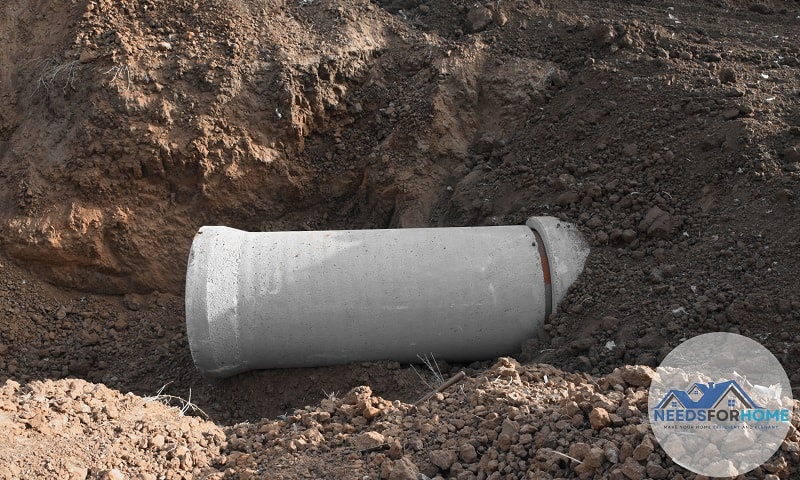Do French Drains Need an Outlet? (Explained)
Avoiding water from stagnating in your house area is very important to protect the landscape. Water logging can damage your land and makes it muddy. So, you cannot walk around or use the backyard even when there is a slight drizzling. Therefore, to avoid such water logging in your backyard or garden, a French drain is the ultimate solution.
French drains are an excellent system of plumbing where without using many resources, you can drain the water in your land area. It consists of a long, perforated hose or pipe that drains the water into the soil. But does it require an outlet for the water flowing through it? Let us understand whether you need to fix an outlet for the French drain or not in this article.

Do French Drains Need an Outlet?
French Drains are not designed with an outlet nor do they need one to pass the excess water out of your landscape. If you carefully construct a French drain, you will not require an outlet with an underground sump to collect the water. Rather, the water can seep through the perforated pipe and be absorbed by the soil beneath.
To understand better, let us get to know how a French drain is designed and laid in your backyard.
How is a French drain installed?
A French drain is installed using a long, perforated pipe that is kept in a trench dug throughout the length of your backyard garden along with some gravel and landscaping cloth. With step-by-step instructions, you can understand the concept more easily.
- First, you have to determine the point where the water stagnates in your land. It is usually the deepest area in the land.
- Then take a center point in that area and dig it for about a foot. Create a square space for setting up the inlet grate.
- Now, from that center, you need to mark an area to dig a long trench. You can use flag posts to mark the area to dig the trench.
- The trench must be at least 18 inches deep and 12 inches wide. The trench must be slanted so that the water flows through the pipe. Therefore, you need to increase the depth by one inch for every 10 feet you dig.
- After digging the trench, lay down a landscaping cloth and fill the gravel for about an inch in it.
- Then lay down a perforated hose above the gravel. You can either buy the hose commercially or you can get a PVC pipe and drill holes every 6 inches.
- Cover the pipe with the remaining landscaping cloth. Connect the starting end of the pipe to the inlet grate and cover the trench with topsoil.
- When water pools over the grate, it flows through the pipe and seeps down the perforations in it. The soil absorbs the water before it reaches the end of the pipe.
This is how a French drain is installed and you can notice why there isn’t a need for an outlet. But instead of simply letting the end of the pipe open, you can join it to the flood grate of the stormwater drainage well.
When do you need an outlet for the French drain?
Although French drains don’t need a specific outlet, if too much water flows in case of a flood or heavy downpour, you may need a backup plan. The soil beneath the gravel in the trench takes some time to absorb the water. But if the volume of water is humongous, it will run down to the other end and may create a pool there.
So, instead of leaving the end open, you can connect it to the common stormwater drainage system present in your neighborhood. Even if there is an unexpected amount of water flowing through your garden, it will pour into the flood drainage.
Also, if frequent weather changes are imminent in your geographical area, you can dig the trench slightly wider and connect the end to the stormwater drainage.
Therefore, only if you encounter such situations, you will need an outlet for your French drain system.
How far should you place the French drain from the house?
The main objective of the French drain is to avoid water stagnation. So, it is safe to place the drain system at least six feet away from your house structure. If the stagnating area is very near to the house, you can dig the trench in the opposite direction of your house. Don’t place the trench closer and parallel to the house.
Placing the French drain closer to the house might damage the foundation and if you hadn’t laid the pipe properly with landscaping cloth, weeds might grow over it. Therefore, placing the drain far away from the house is highly recommended.
Read Also – What is the Difference Between A15 and A19 Light Bulbs
Conclusion
There isn’t a better and an easy way to remove stagnating water from your house area than using a French drain. According to the area you are living in, you can design the laying of the drain and avoid overflow of water. If there is a necessity to install an outlet, you can connect the end to a stormwater drain easily.